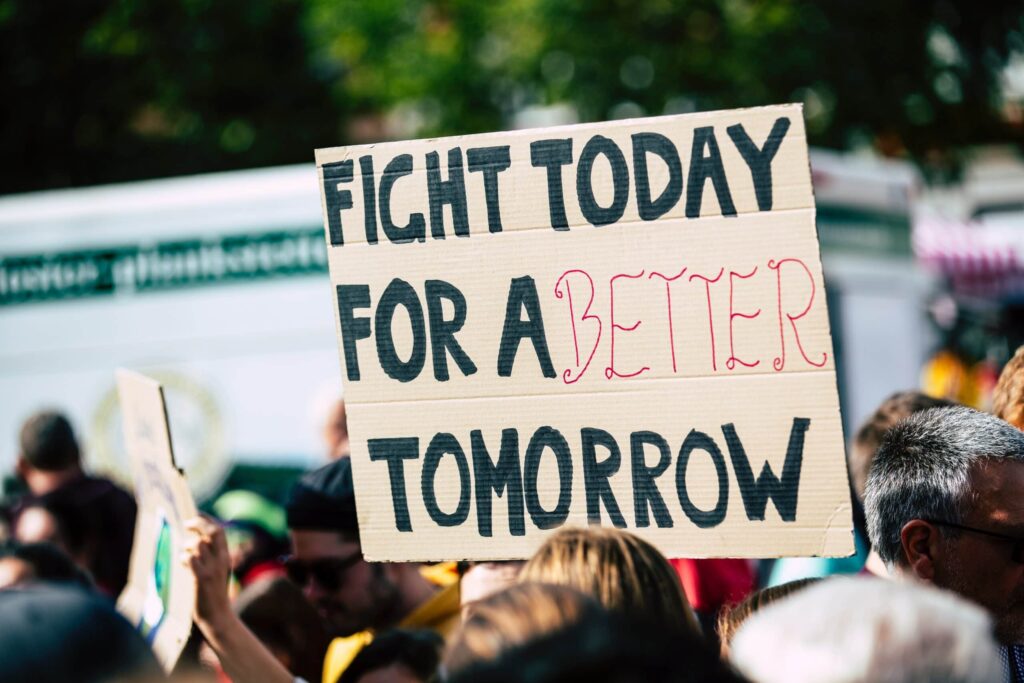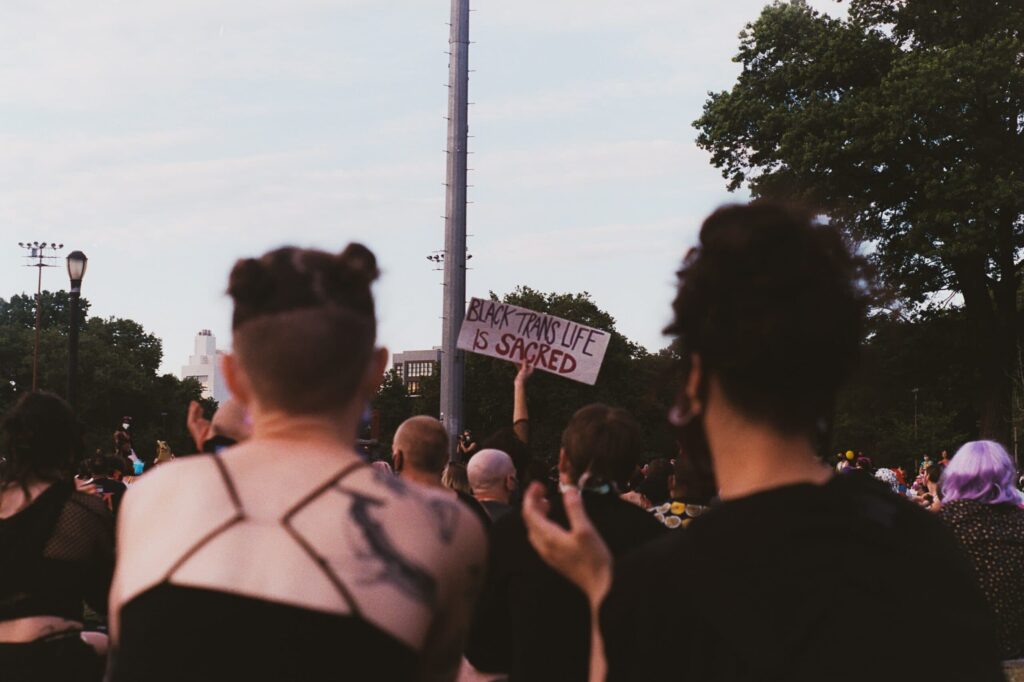If you’ve ever heard of the infamous Stonewall Riots – a key part of the trans and gay rights movement – then the name Sylvia Rivera might ring a bell. As one of the instigators of the uprising in 1969, she became an influential figure in history among the LGBTQIA+ community. Word on the street at the time was that she was the second patron in the bar to throw a molotov cocktail when police began to raid the Stonewall Inn that morning in New York.
At the time, the gathering of gay and trans men and women in the New York bar scene was not only frowned upon, but it was also illegal. Dating as a trans person was nearly impossible, as it could put you in an extremely unsafe position.
At HER, we think Sylvia deserves to be remembered and honored — no matter how far we come in the fight for equality. But besides being one of the most well-known protesters at the Stonewall Riots, who was Sylvia Rivera really? In this article, you’ll find out everything you need to know about this trans icon!
Download HER app
Who Was Trans Activist Silvia Rivera?
Much more than just a talented entertainer, Sylvia Rivera was a wildly passionate pioneer at the forefront of the gay rights movement. Born July 2, 1951, she lived a fierce and passionate life until she passed away from liver cancer in 2002. She was only 50 years old at the time.
To this day, people still fondly refer to her as the “Rosa Parks of the modern transgender movement.” The truth is, our queer community simply wouldn’t be the same today without her hard work as a trans and gay rights activist.
A Latina-American Drag Queen
Bronx-born but of Puerto Rican and Venezuelan descent, Sylvia Rivera was a loud and proud Latina-American drag queen. Being a queer trans person of color (QTPOC), she battled exclusion her entire life.
Sadly, she had a rough childhood growing up, being rejected by her own family for not abiding by society’s standards of being a “boy.” When she was only 11, she ran away from home and began living on the street, working in Times Square as a child prostitute to get by. It was then that a group of drag queens welcomed her into their circle and she took on the identity of drag queen Sylvia Rivera. Although she wasn’t a fan of labels, she later on identified as transgendered.
The Fight Against Gender Identity Discrimination
Throughout Sylvia Rivera’s work as an activist in the ‘60s and ’70s, there was so much discrimination against the trans and gay community. Before there was Laverne Cox and Caitlyn Jenner in the spotlight, Sylvia Rivera was advocating for acceptance and equality for gender non-conforming folk, which she tirelessly fought for throughout her life. While of course we still face discrimination in the queer community today, things have come a long way since then thanks to her efforts.
How Sylvia Rivera Stood Up for Transgender People
Primarily advocating for trans and gender non-conforming youth, Sylvia was not someone who could be silenced. Her childhood experiences on the streets and exposure to sex work shaped who she was and she never stopped fighting for what she believed in.
Sylvia and drag sister Marsha P. Johnson co-founded the Street Transvestite Action Revolutionaries (or STAR House) in 1970. It was started after a sit-in protesting the cancelation of a school dance at Weinstein Hall, all because it was sponsored by a gay organization. STAR House became the first LGBT youth center in North America at the time. Dedicated to helping homeless trans, gay, and gender non-conforming people, Sylvia knew that this community of people was the most in need at the time.
Supporting the Gay Rights Movement
Right after the Stonewall Riots, the Gay Liberation Front was formed, which Sylvia Rivera also co-founded. The organization encouraged the LGBT community to support the gay rights movement, often by taking radical action by protesting. They were often willing to go to extreme lengths to support the gay rights movement. It was thanks to the group’s support that cross-dressing and female impersonation became not only legal but much more accepted across the United States (and the world!).
More About Silvia Rivera’s Work
Above all, Sylvia Rivera was an advocate for the rights of marginalized groups who had been silenced. Not only was she a trans drag queen and a person of color, but she had also faced incredible discrimination for being homeless, a sex worker, addicted to drugs, and even incarcerated at one point. These incredibly difficult life experiences inspired her to be the voice who spoke up for others who felt they could not.
Learn More with HER
Did you love learning about this incredible Latina-American trailblazer? If you want to find out more about our incredible queer community throughout history, then download our free app and join the discussion on HER! You can instantly connect and engage with millions of other like-minded queer womxn in our safe and welcoming LGBTQIA+ chat rooms and personals. Who knows, maybe you’ll even find love for life!
Download HER app







